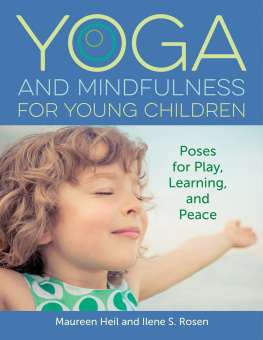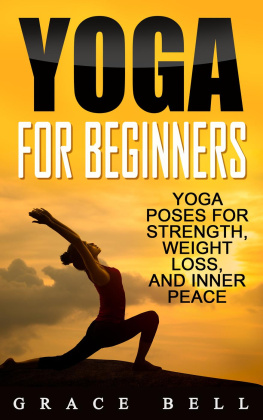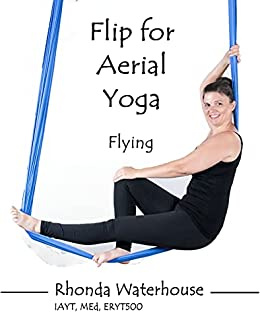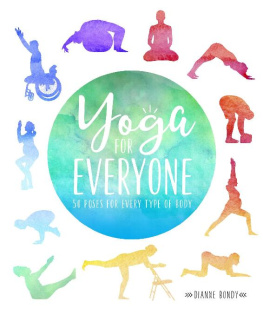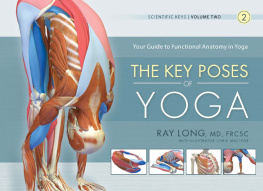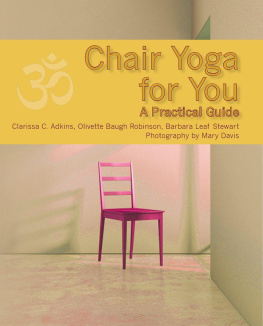
YOGA
AND MINDFULNESS
FOR YOUNG CHILDREN
Poses for Play,
Learning, and Peace
Maureen Heil and llene S. Rosen

Published by Redleaf Press
10 Yorkton Court
St. Paul, MN 55117
www.redleafpress.org
2020 by Maureen Heil and Ilene S. Rosen
All rights reserved. Unless otherwise noted on a specific page, no portion of this publication may be reproduced or transmitted in any form or by any means, electronic or mechanical, including photocopying, recording, or capturing on any information storage and retrieval system, without permission in writing from the publisher, except by a reviewer, who may quote brief passages in a critical article or review to be printed in a magazine or newspaper, or electronically transmitted on radio, television, or the internet.
First edition 2019
Senior editor: Heidi Hogg
Managing editor: Douglas Schmitz
Art director: Renee Hammes
Cover design: Louise OFarrell
Cover photograph: yaruta/Canva
Interior design: Michelle Lee Lagerroos
Typeset in Museo Slab and Museo Sans
Interior photos: Ilene S. Rosen
Printed in the United States of America
Library of Congress Cataloging-in-Publication Data
Names: Heil, Maureen, author. | Rosen, Ilene S., author.
Title: Yoga and mindfulness for young children : poses for play, learning, and peace / by Maureen Heil and Ilene S. Rosen.
Description: First edition. | St. Paul, MN : Redleaf Press, [2019] | Includes bibliographical references and index.
Identifiers: LCCN 2019013324 | ISBN 9781605546674 (pbk. : alk. paper)
Subjects: LCSH: Hatha yoga for children. | Exercise for children.
Classification: LCC RJ133.7 .H45 2019 | DDC 613.7/046083--dc23
LC record available at https://lccn.loc.gov/2019013324
This book is dedicated to the inner child in everyone. May we always remember to listen to that wisdom. Therein lies the joy.
Contents
Acknowledgments
The authors gratefully acknowledge the wisdom and support of Gail Silver, author and founder of Philadelphias Yoga Child; our editor, Cathy Broberg; and the staff at Redleaf Press. We thank the kids and staff of all the schools and centers that weve worked with, especially The Giving Tree Daycare and Preschool in Philadelphia for allowing us to come in and photograph. Blessings to Shiva Das of Yoga on Main in Manayunk, Philadelphia, who taught both of us classical yoga and is the reason we met. Endless thanks to our families and friends for putting up with our busy schedules. And to our loyal dogs, Maddie and Cooper, and their best bud, Lulu, for being patient with us and keeping us grounded.
Introduction
Lila stormed into the room set up for yoga class. Anyone could see from her scowllips pursed, eyebrows up and drawn togetherthat she was hopping mad. She folded her arms in front of her chest.
Ms. Sarah made me and Aiden stop playing our game! she complained. It was a good game, and we were following the rules!
Sometimes teachers have reasons for things, and we have to trust their reasons, suggested Ms. Sibyl, the teacher.
I wont! Lila shouted with a glare. But she agreed to sit in the circle and begin the yoga lesson.
Put your hands on your belly. Take a deep breath in, Ms. Sybil began, leading the group in a slow, calm voice. Feel the breath come into your belly. Now feel it go out, slowly, through your nose.
The group of four- and five-year-olds took five slow, deep breaths. Afterward Lila was visibly calmer, with her hands now resting at her sides. Im still a little bit mad, she confided to Ms. Sybil, but I dont have to make that face anymore.
Can such a simple exercise really make a difference in the behavior and feelings of young children? In short, yes. It can. Yoga and mindfulness calm the mind, tame the emotions, and tone the body. This is true whether the body belongs to someone who is twenty-four years old, sixty-four, or four. In early childhood, yoga pairs two aspects of the whole child that we dont generally think of together: the emotional and physical. Yoga teaches children how to use the emotional and physical along with their breath to create a calmer, more balanced whole person. When you bring yoga and mindfulness to your classroom, you offer children a tool they can use to manage their emotions and work through conflicts calmly. These are social-emotional learning skills (often called SEL) that children can use anytime and anywhere throughout their lives. Right now, today, they can put them to use in your classroom, creating a more harmonious place as they learn and play.
TEACHER TIME
You wont be able to create a calm classroom if you yourself are a churning sea of negative emotions. When you bring yoga to your class, your students are not the only ones who will benefityou will too! By practicing yoga, youll be better able to manage your own emotions and calm an overly busy mind, allow mental chatter to settle down, and bring clarity to your emotions so you experience less overall stress. As a result, you might find your friendships, family relationships, and work relationships becoming less challenging, allowing you to be more engaged in your classroom.
To be clear, yoga and mindfulness arent magic. Your students wont suddenly become perfectly behaved or perfectly fit. Practicing yoga wont make anyones life problems suddenly disappear. Some people will take to yoga more than others and experience greater benefits; this is true for children as well as adults. Even so, when people use yoga and mindfulness, they usually have an easier time taking lifes difficulties more in stride. They are able to stay steadier and more centered in the face of everyday troubles. That, friends, is where peace and power lie.
WHAT ARE YOGA AND MINDFULNESS?
Lets begin by establishing what we mean by yoga and mindfulness.
Yoga is, in essence, a self-help program that originated in India about two thousand years ago. It includes movements (poses), breathing exercises, meditation, and other activities to help people achieve a sense of well-being and wholeness. In yoga the poses are linked to conscious, deep breathing. Without that link, poses are exercise but not yoga in the traditional sense.
In fact, the word yoga translates from Sanskrit as to yoke, as when two oxen are yoked, or joined, together in a field to work. By yoking together the body, breath, mind, and spirit, a person can move through the world with ease and purpose.
Mindfulness is an ancient style of meditation. It involves paying attention to what is happening in the here and now without thinking about the past or anticipating the future. Achieving mindfulness can be much harder than it sounds for adults, as most of us spend surprisingly little time truly noticing the present moment. Mindfulness helps us learn to do this by teaching us to focus on things we usually ignore, such as breathing, the tension in our muscles, and the natural world around us, not judging or identifying them, but just noticing. Learning to do this for even a few moments can allow adults to find a sense of relaxation and well-being. Children naturally are better able to live in the present moment, but even a very young child who is upset, worried, or fearful about a situation at home or school may be distracted and unaware in your classroom. Learning mindfulness techniques gives children the tools to more easily manage their emotional upsets, empowering them to refocus on the here and now and more fully participate in the opportunities you provide. Over time, even children you think of as difficult may become a little less anxious and reactive to everyday challenges and a little more engaged when they learn these tools.
Next page
